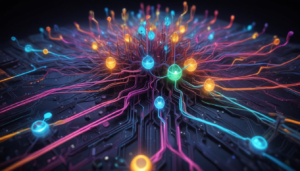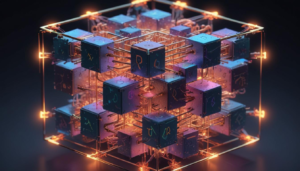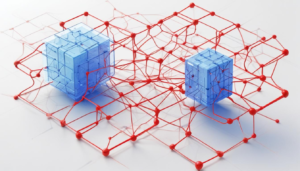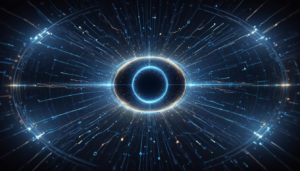Quantum Error Correction: Paving the Path to Supremacy
Quantum computing is transforming the world of technology. Experts are increasingly discussing how error correction plays a pivotal role in realizing true quantum breakthroughs. In simple terms, quantum error correction enables computers to overcome fragile qubits and environmental noise. This breakthrough has the potential to revolutionize industries, ranging from cryptography to medicine.
In this blog, we will examine the fundamentals of quantum computing, explore why error correction matters, and detail the latest advancements in this exciting field. You’ll also discover insights that could influence decisions about future investments in this technology.
The Fundamentals of Quantum Computing
 Quantum computing differs from classical computing in several ways. Classical computers use bits (0s and 1s), while quantum computers use qubits. These qubits exist in superpositions, meaning they can represent both 0 and 1 simultaneously. Consequently, quantum systems have the potential to solve complex problems much faster than conventional systems.
Quantum computing differs from classical computing in several ways. Classical computers use bits (0s and 1s), while quantum computers use qubits. These qubits exist in superpositions, meaning they can represent both 0 and 1 simultaneously. Consequently, quantum systems have the potential to solve complex problems much faster than conventional systems.
Additionally, quantum entanglement enables qubits to interact in unique ways, while traditional computers rely solely on linear processing. Therefore, quantum computing holds the promise to tackle challenges that remain unsolvable with classical approaches. However, qubits are extremely sensitive to even the smallest disturbances.
The Fragile Nature of Qubits
 Qubits are inherently fragile. A minor temperature change or faint electromagnetic wave can collapse their quantum state, rendering calculations unreliable. Without a robust solution, computers may never reach their full potential.
Qubits are inherently fragile. A minor temperature change or faint electromagnetic wave can collapse their quantum state, rendering calculations unreliable. Without a robust solution, computers may never reach their full potential.
As quantum systems scale, the likelihood of errors increases. Researchers are determined to devise methods that mitigate this challenge, which makes quantum error correction a breakthrough solution.
The Concept and Importance of Quantum Error Correction
 Quantum error correction is a process designed to protect quantum information. Unlike classical methods, which rely on redundancy, error correction in quantum systems must preserve delicate quantum states without violating the no-cloning theorem. As a result, scientists group physical qubits to form a logical qubit capable of detecting and correcting errors.
Quantum error correction is a process designed to protect quantum information. Unlike classical methods, which rely on redundancy, error correction in quantum systems must preserve delicate quantum states without violating the no-cloning theorem. As a result, scientists group physical qubits to form a logical qubit capable of detecting and correcting errors.
This process allows computers to perform long and complex computations reliably. Achieving quantum supremacy—a state where quantum computers outperform classical supercomputers—requires efficient error correction techniques.
Techniques Behind Quantum Error Correction
 One widely discussed technique is the use of surface codes. These codes arrange qubits in a two-dimensional grid, making it easier to spot and fix errors. Topological protection also gains attention for its ability to shield information from noise.
One widely discussed technique is the use of surface codes. These codes arrange qubits in a two-dimensional grid, making it easier to spot and fix errors. Topological protection also gains attention for its ability to shield information from noise.
Hybrid approaches combining both hardware and software are also in development, aiming to further reduce error rates and improve algorithm efficiency.
Breakthroughs and Industry Efforts
 Tech giants like IBM and Google are actively researching quantum error correction. IBM recently demonstrated advanced error mitigation techniques, while Google has been refining quantum gates to minimize noise. Companies worldwide are pushing the limits of this field, fueling the global race toward supremacy.
Tech giants like IBM and Google are actively researching quantum error correction. IBM recently demonstrated advanced error mitigation techniques, while Google has been refining quantum gates to minimize noise. Companies worldwide are pushing the limits of this field, fueling the global race toward supremacy.
For example, IBM’s quantum computing team published findings on improved logical qubits, and Google’s efforts have shown significant error rate reductions. For more insights, check out IBM’s Quantum Computing resources.
The Road to Quantum Supremacy
 Quantum supremacy refers to a quantum computer outperforming classical supercomputers. With every advance in error correction, the goal moves closer. Improved methods will allow computers to handle more complex tasks while maintaining reliability.
Quantum supremacy refers to a quantum computer outperforming classical supercomputers. With every advance in error correction, the goal moves closer. Improved methods will allow computers to handle more complex tasks while maintaining reliability.
This achievement will have real-world applications in industries ranging from cryptography to drug discovery.
Practical Applications and Future Prospects
 Quantum error correction will revolutionize industries. In cryptography, it can secure data against potential quantum attacks, while in pharmaceuticals, it can speed up drug discovery by accurately simulating molecular interactions.
Quantum error correction will revolutionize industries. In cryptography, it can secure data against potential quantum attacks, while in pharmaceuticals, it can speed up drug discovery by accurately simulating molecular interactions.
Beyond these sectors, logistics, artificial intelligence, and supply chain management will benefit from optimization algorithms powered by quantum systems.
Overcoming Current Challenges
 Challenges remain in scaling up error correction for large systems, and error rates still need further reduction to create fault-tolerant computers. Collaboration among academia, industry, and government will be essential for continued progress in this race toward supremacy.
Challenges remain in scaling up error correction for large systems, and error rates still need further reduction to create fault-tolerant computers. Collaboration among academia, industry, and government will be essential for continued progress in this race toward supremacy.
How to Get Involved in Quantum Computing
 If you’re intrigued by the field, consider exploring quantum mechanics fundamentals and joining online courses in quantum computing. Numerous companies also offer research and internship opportunities. By contributing to this field, you can help develop more robust systems and take part in the journey toward a fault-tolerant quantum future.
If you’re intrigued by the field, consider exploring quantum mechanics fundamentals and joining online courses in quantum computing. Numerous companies also offer research and internship opportunities. By contributing to this field, you can help develop more robust systems and take part in the journey toward a fault-tolerant quantum future.
Final Thoughts: The Future is Quantum
 In conclusion, quantum error correction is crucial for the future of quantum computing. It addresses the fragile nature of qubits and paves the way toward quantum supremacy. This field holds the key to technological innovation across many industries. Every step in improving error correction brings us closer to solving problems that classical computers cannot.
In conclusion, quantum error correction is crucial for the future of quantum computing. It addresses the fragile nature of qubits and paves the way toward quantum supremacy. This field holds the key to technological innovation across many industries. Every step in improving error correction brings us closer to solving problems that classical computers cannot.
For further exploration, visit IBM Quantum Computing and see how companies are pushing the boundaries of this transformative technology.



